Do you like bacon? Pancakes? Crispy, browned things cooked on a griddle? Maple syrup? Of course you do, so fasten your seatbelt and come aboard the organ train, because we're traveling to scrapple country.
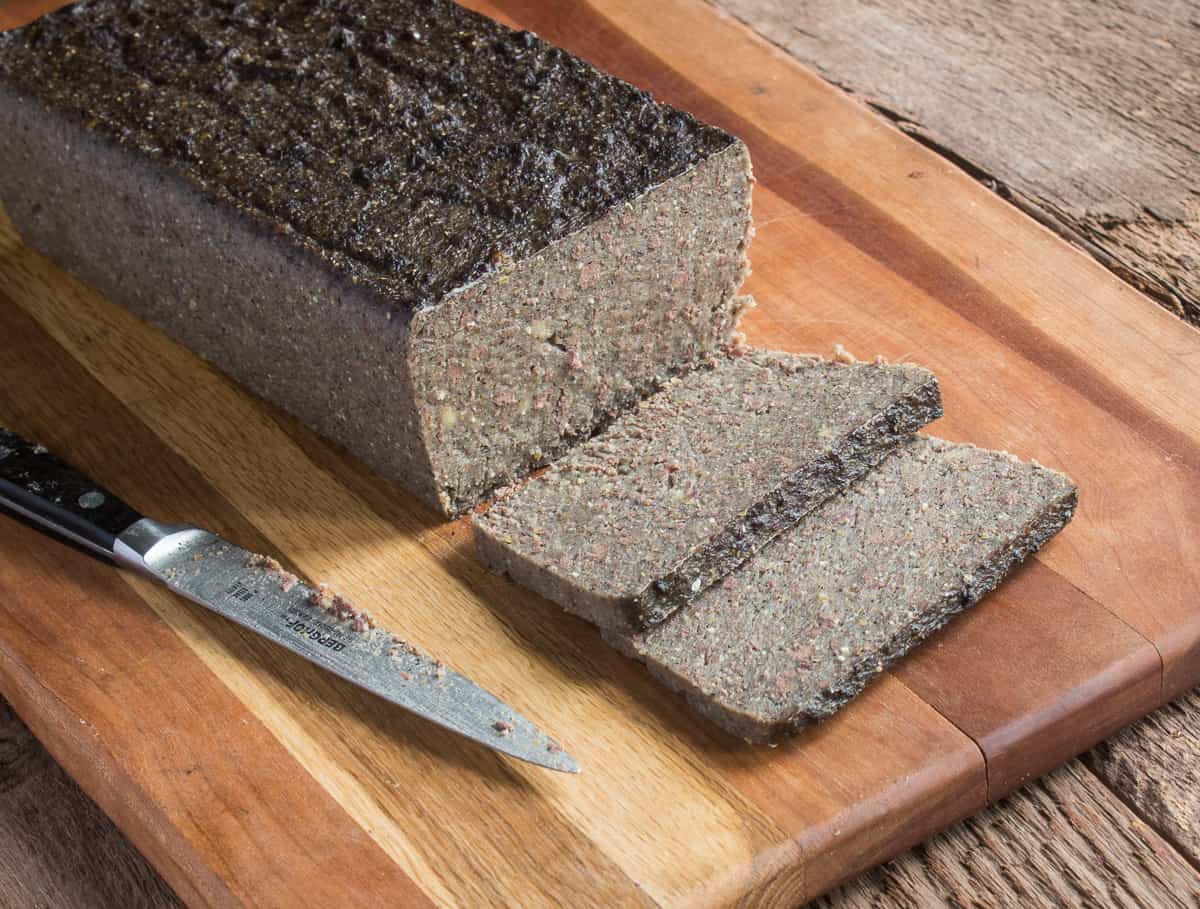
If you like offal, or even if you don't partake in the finer parts of animals and you've never had scrapple, you're in for a treat. I've cooked a lot of organ meat, and I can tell you, over the years I've found different tricks here and there for making things palatable. Scrapple is one of the finest, most mild-tasting organ meat recipes I've made.
If you're not familiar, scrapple, (also known as pannhaas) is a sort of Pennsylvania Dutch specialty with a cult following from the Mid-Atlantic region of the U.S.. Undoubtedly born of the pork harvest like it's grain-laden cousin black sausage, scrapple is one of the kings of offal.
Once you get the basic method down you can modify it and tweak things however to suit your needs. Most recipes use pork or even a pig head, but it can be made with just about anything.
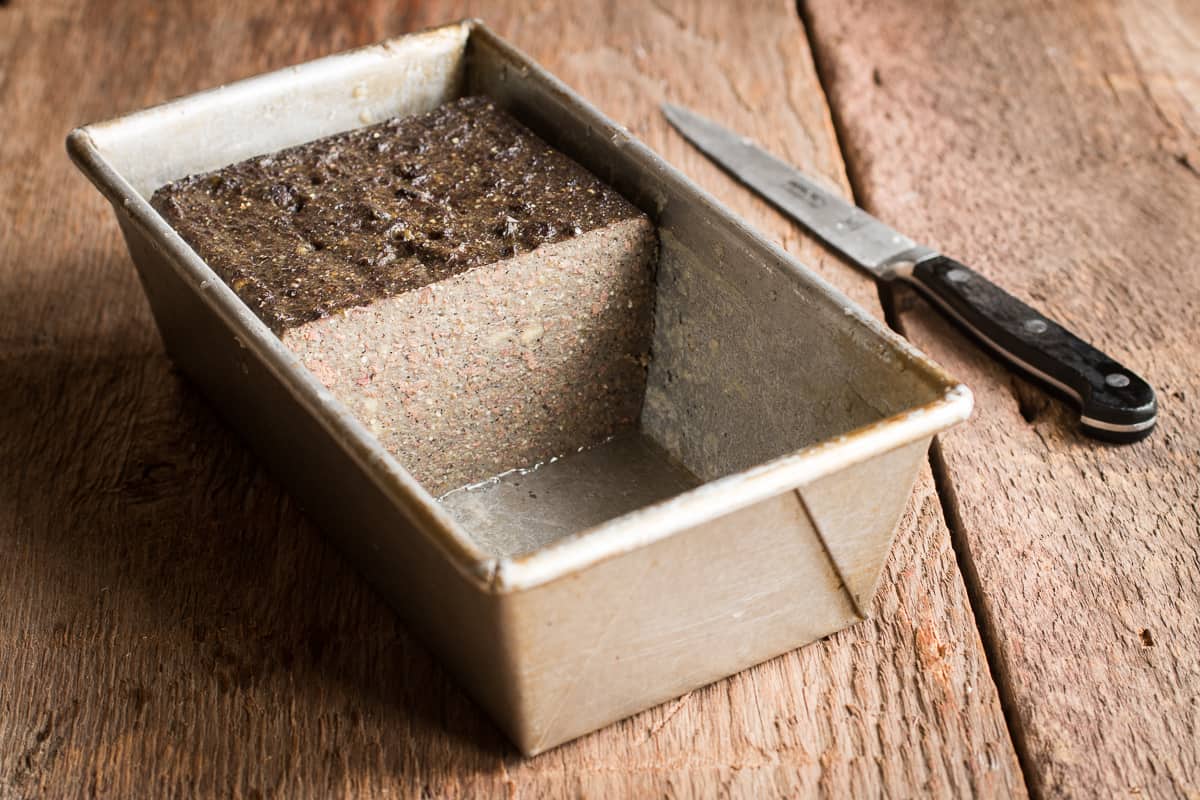
What is scrapple exactly? Besides a triumph of organ meat cookery, it's basically a thick porridge of buckwheat and cornmeal mixed with spices and ground organs, typically liver, but often with other things too.
For our purposes here, I've designed the recipe for any and all organ meats. I've done the work testing and tweaking, so all you need to do is plug and play whatever 14 oz of organs you have into the basic formula, and be on your way.
Great scrapple starts with a great stock
A note on cooking liquid. Like most scrapples I researched, mine starts out with a base of rich meat stock, and if you want a really good one, you need it--no compromise there.
Cornmeal and buckwheat will firm up the scrapple, meat stock that's been long-cooked to extract collagen from bones will add an extra layer of "firmness".
That firm set gives you more control when you're slicing and giving body to the finished product. You can use some canned stock, but soup bones, neck bones, or any sort of bone with meat attached will be the best.
As I note in the recipe, if you have some leftover meat like pork butt you can just chop that and toss it in too.
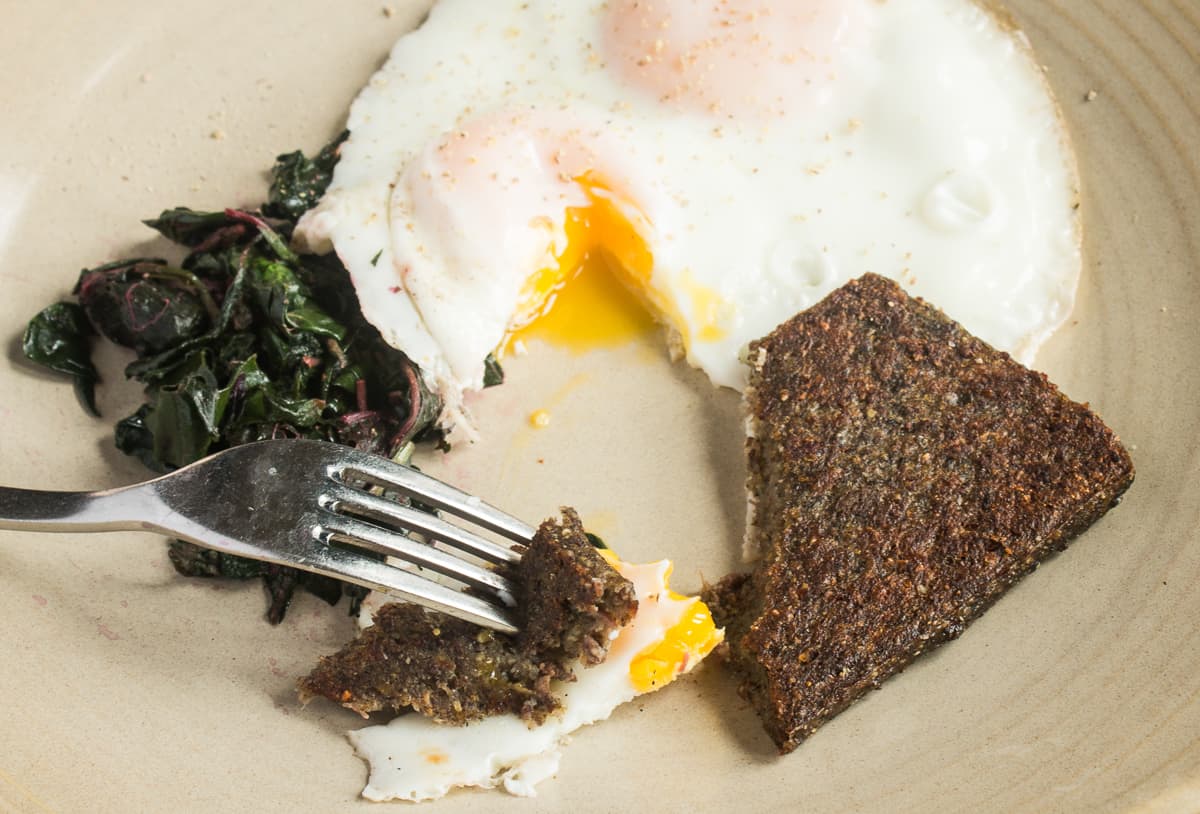
Once the scrapple is made and cooled comes the fun part: eating. The scrapple gets cut into slices, then fried crispidity-crisp, and, if you want to be traditional, served for breakfast with maple syrup.
The syrup might sound odd, but the spices in the scrapple help the pairing, and if you've ever had a plate of steaming hot pancakes with bacon on the side, you'll be no stranger to a little sweetness in the savory realm.
Trust me, it's eaten with a touch of maple for a reason. That being said, as I ate through a number of different loaves, I did find some hot sauce was a good change of pace here and there. At your house, you choose how you eat your scrapple.
Oh, and if you want to skip making your own and buy some, my friends on the East Coast recommend Habbersett Scrapple (see the link after the recipe).
How to Make Scrapple Step by Step
The images below describe the process. Look them over and you'll see it's not hard to make your own delicious scrapple at home.
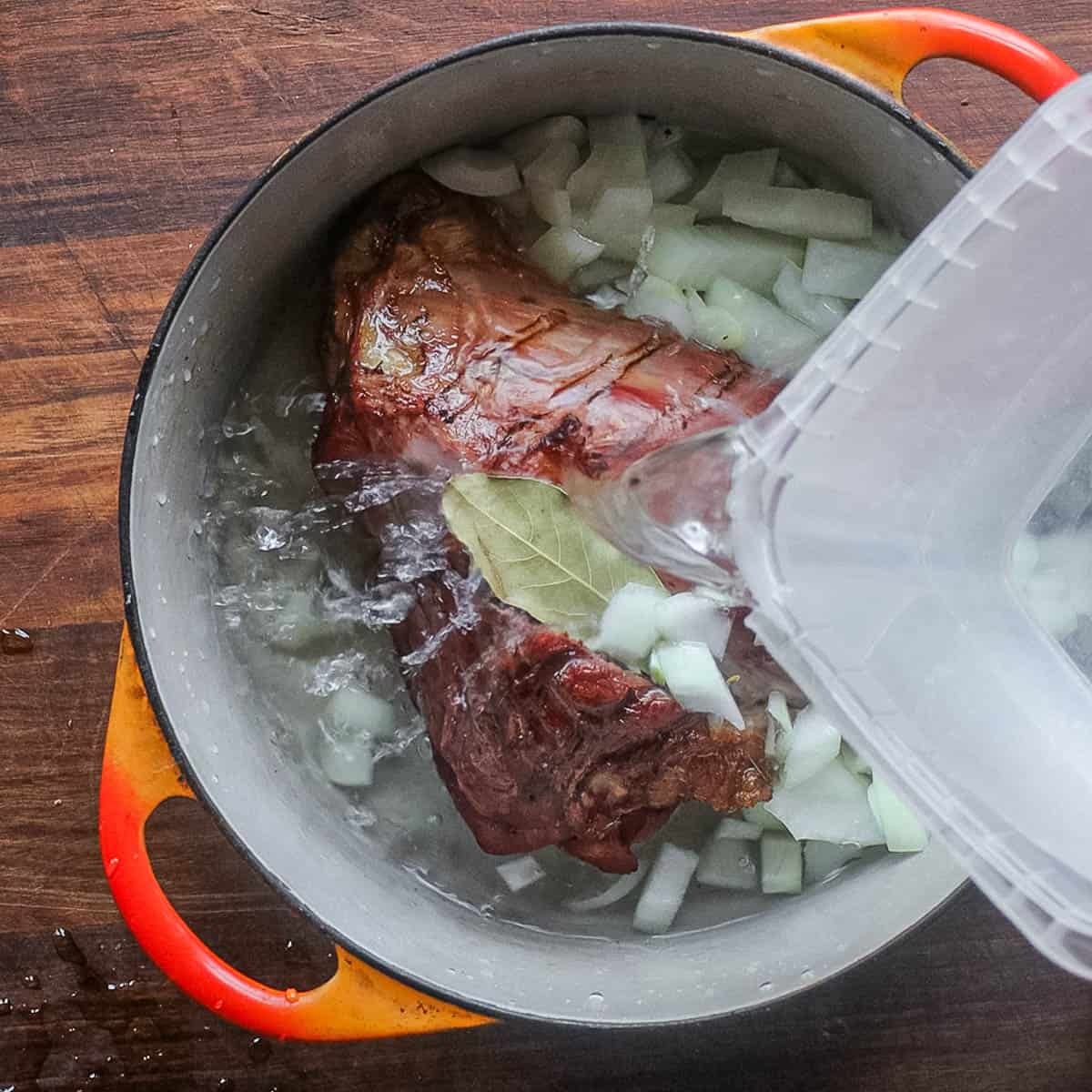
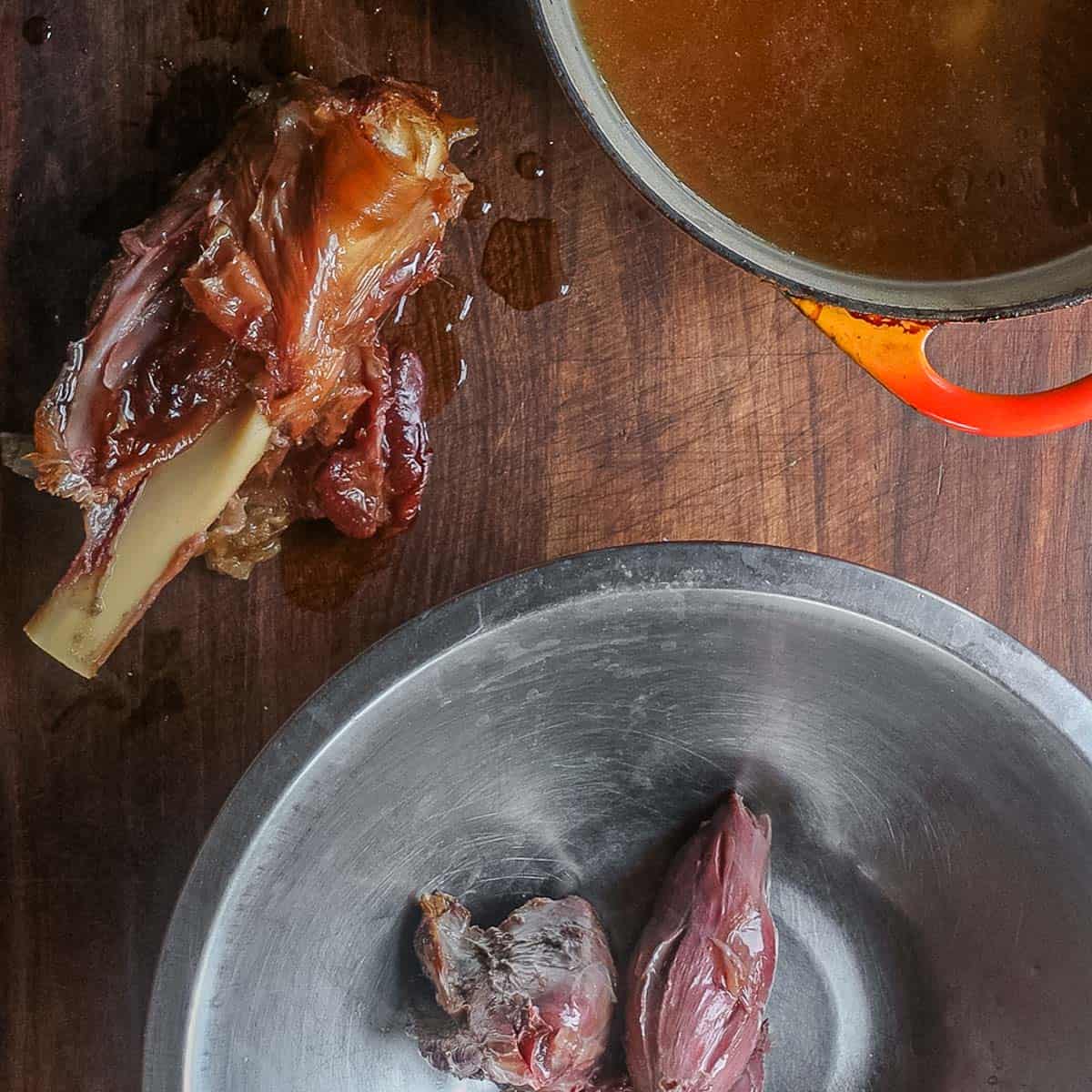
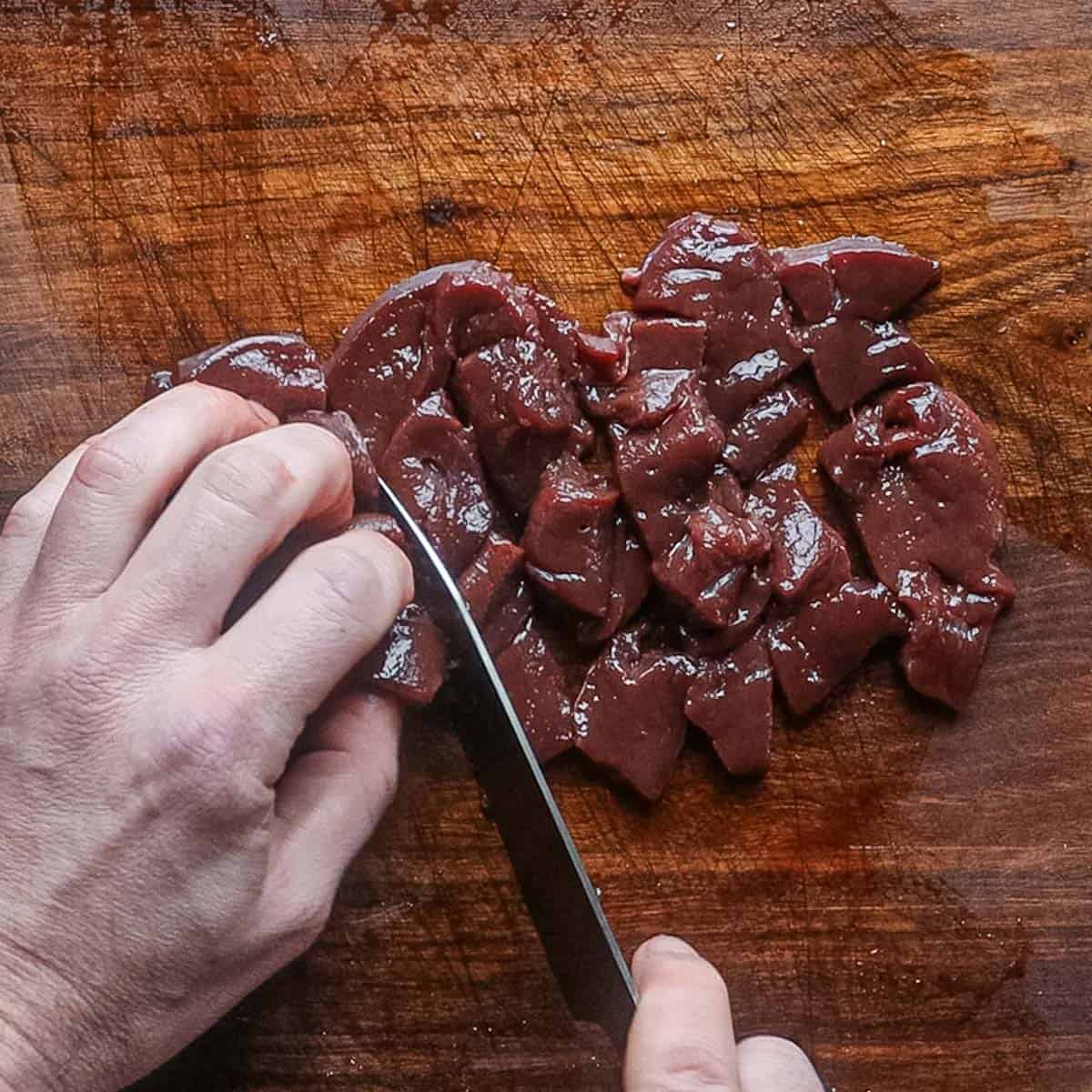
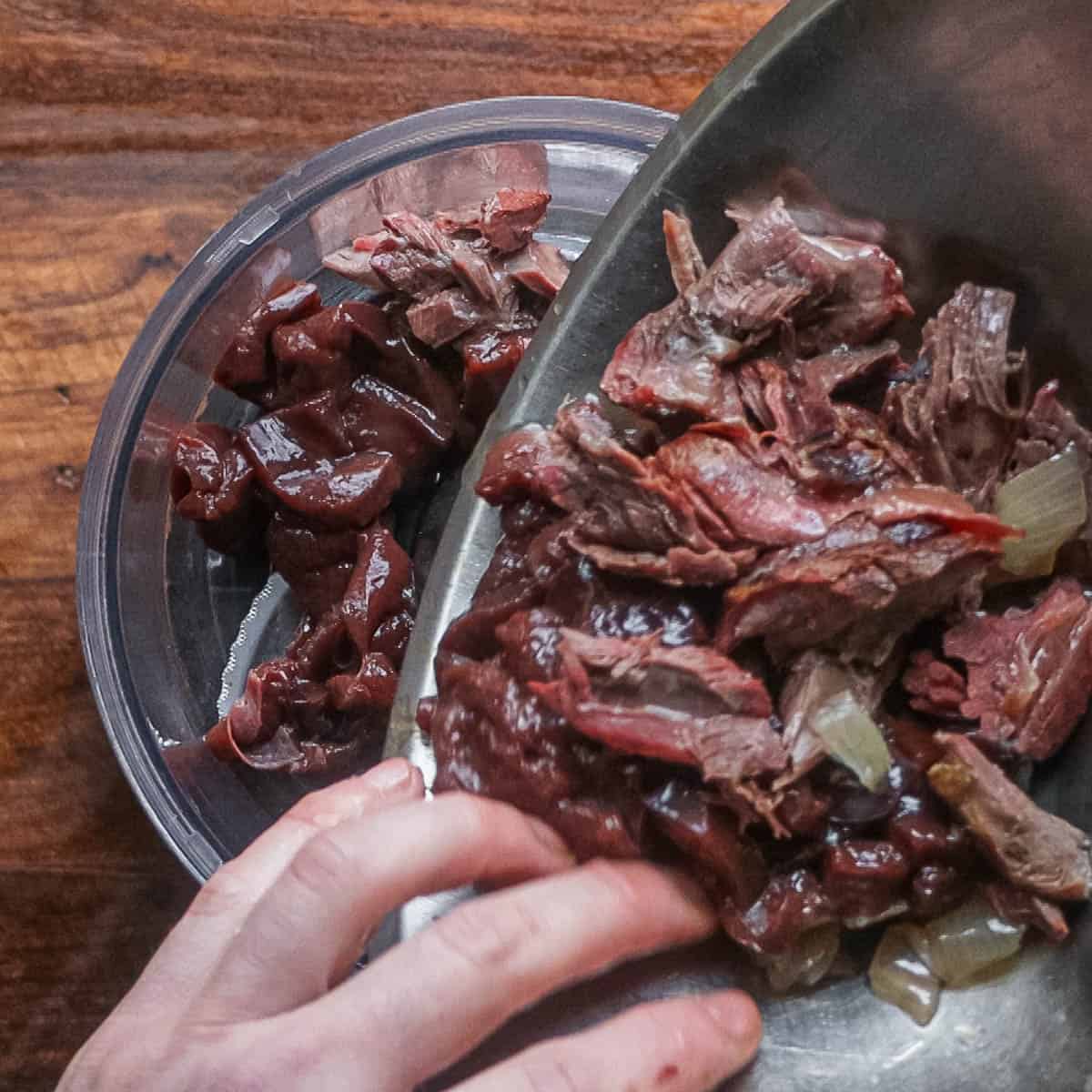
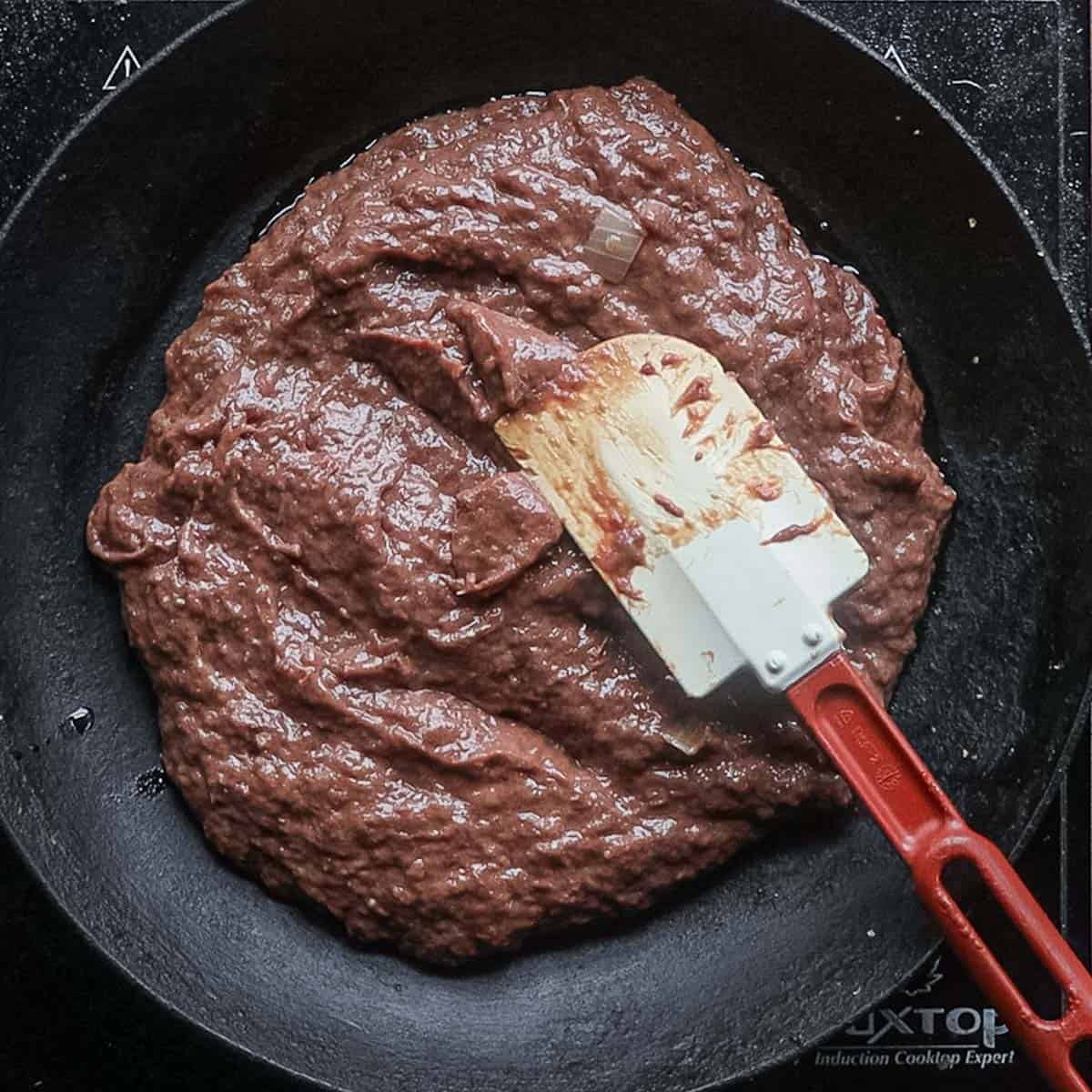
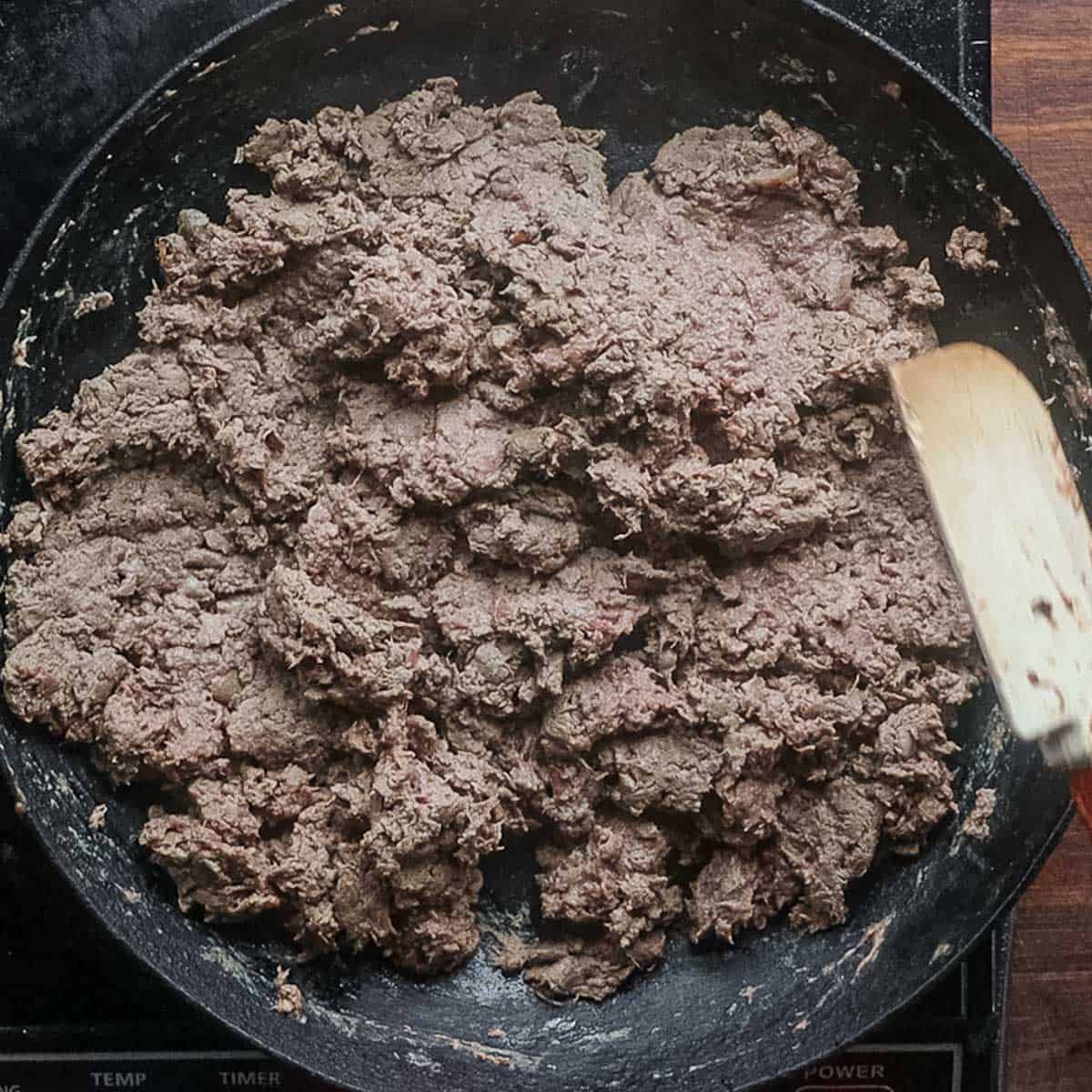
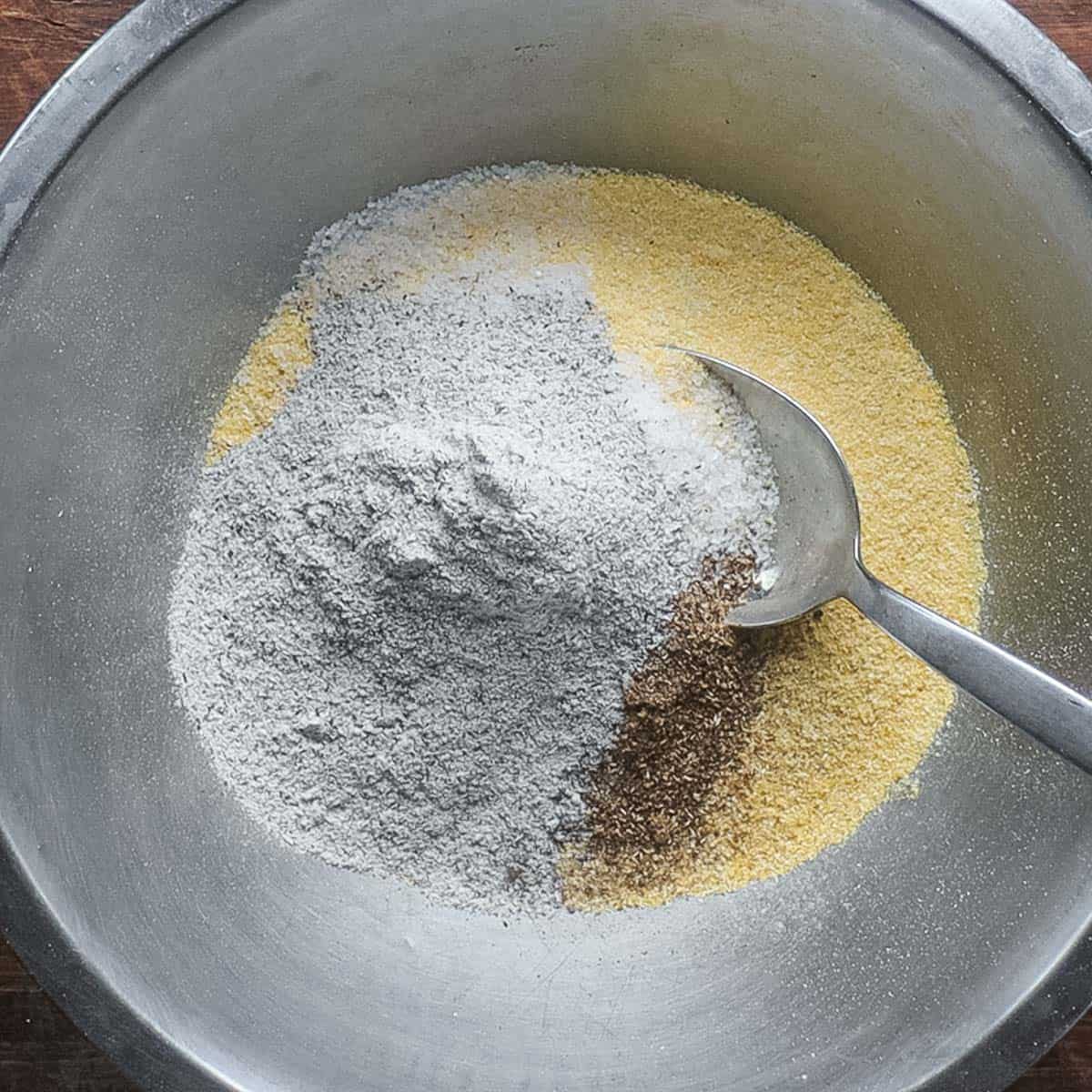
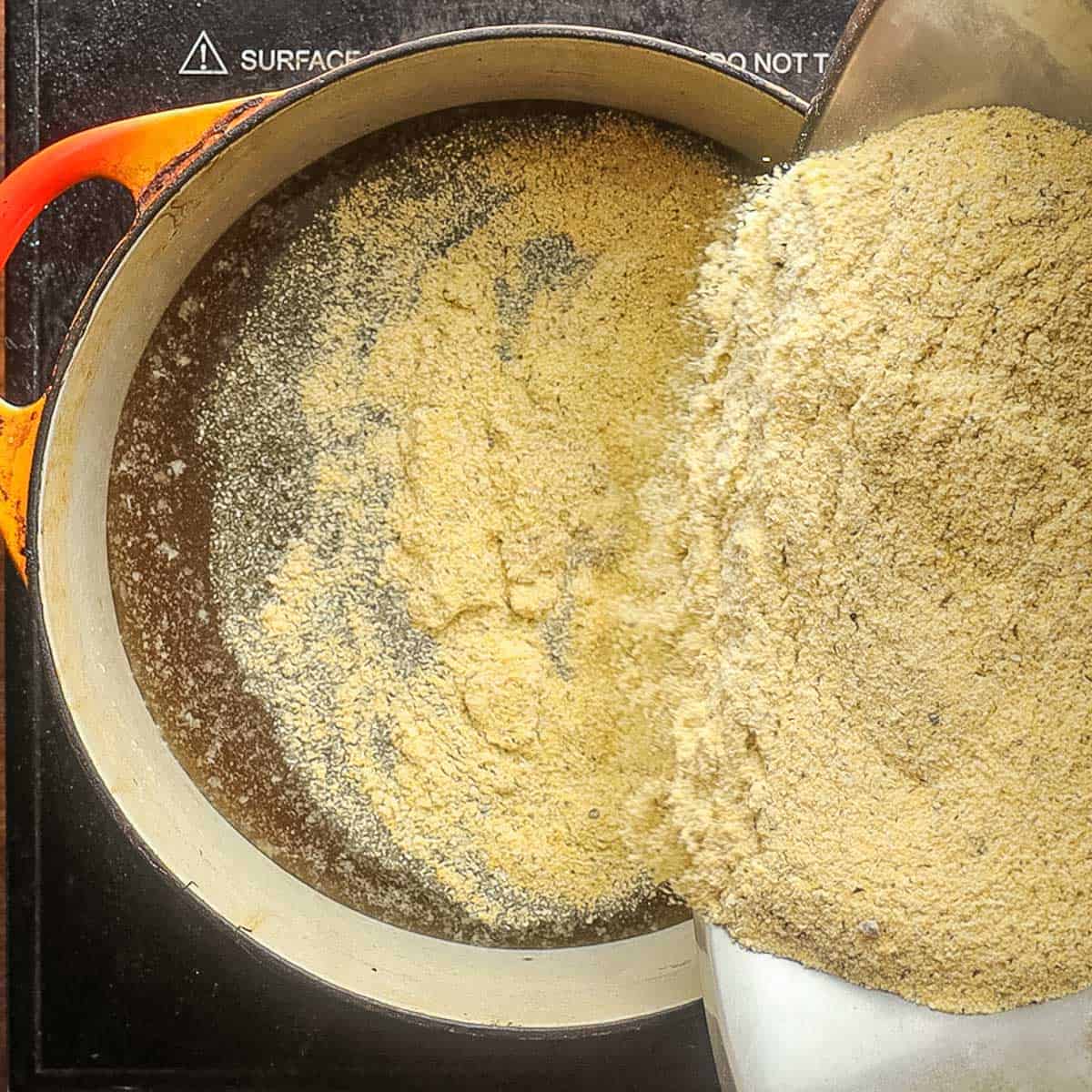
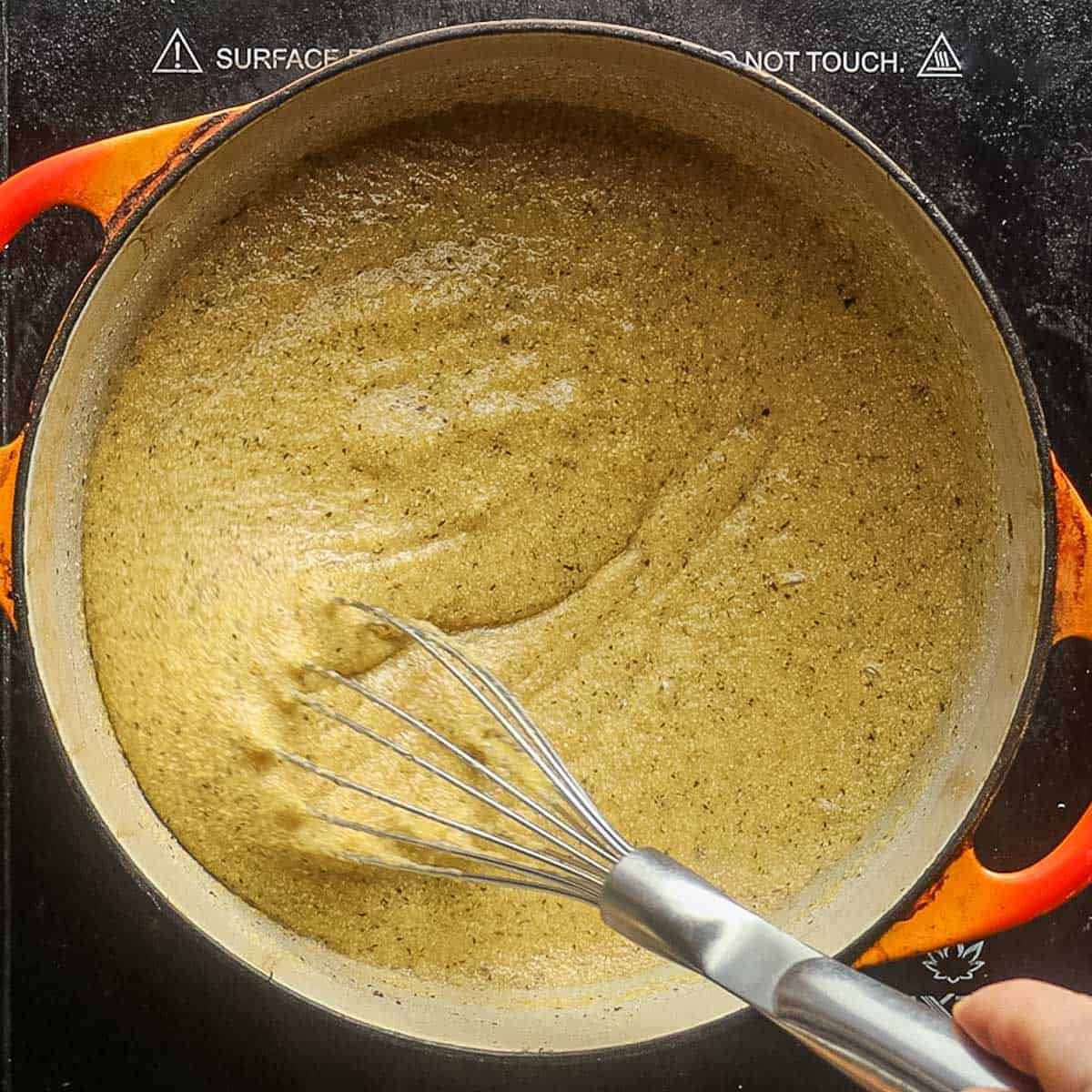
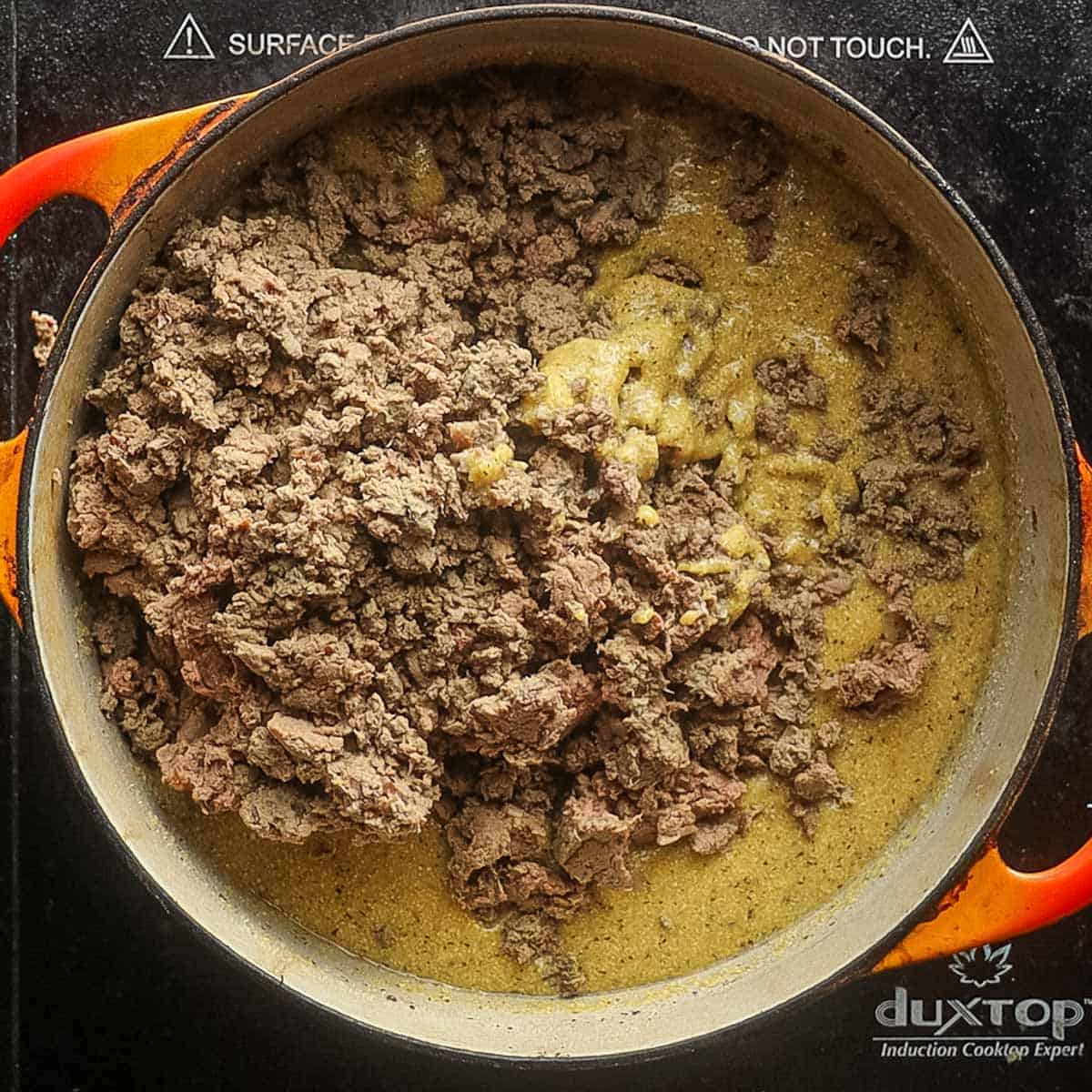
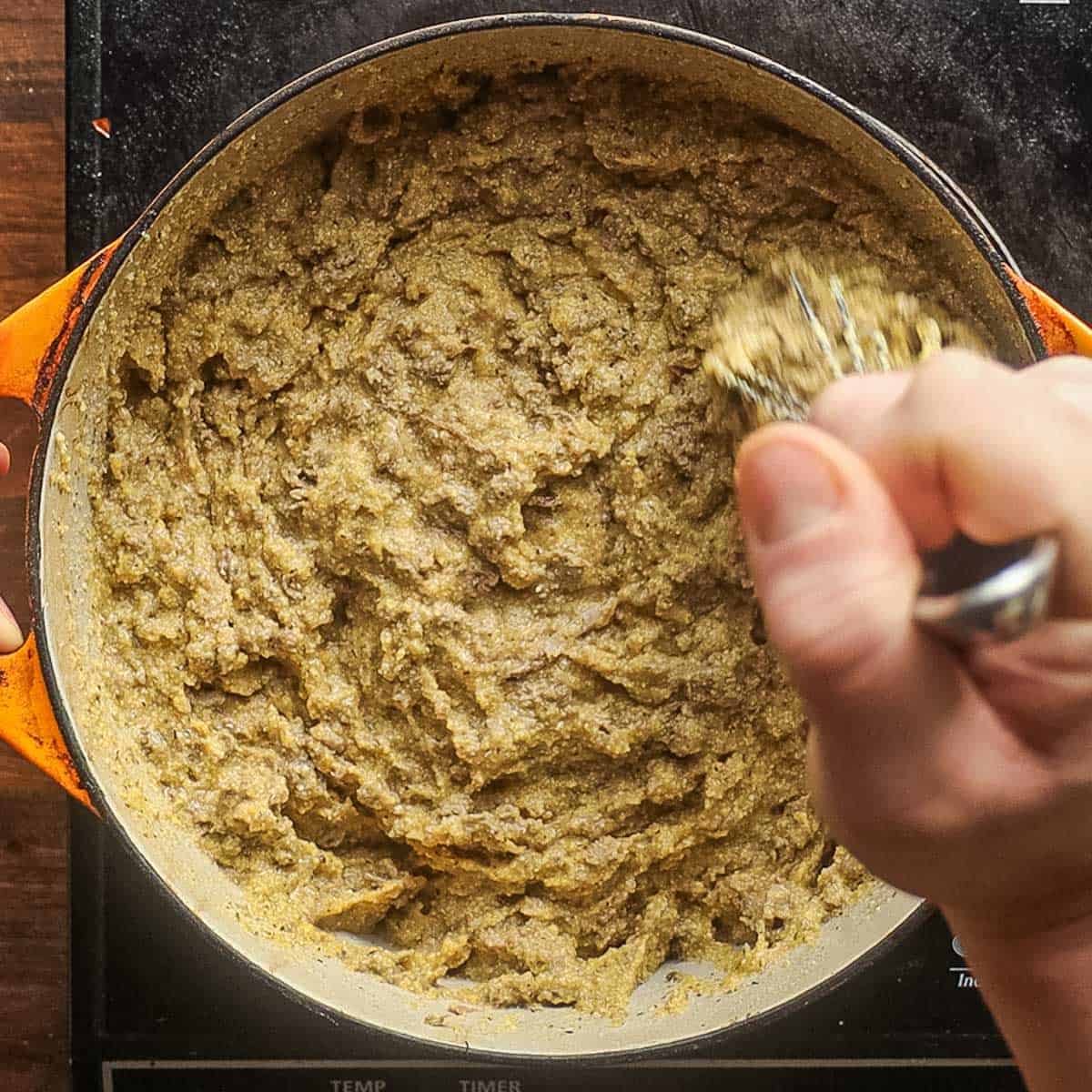
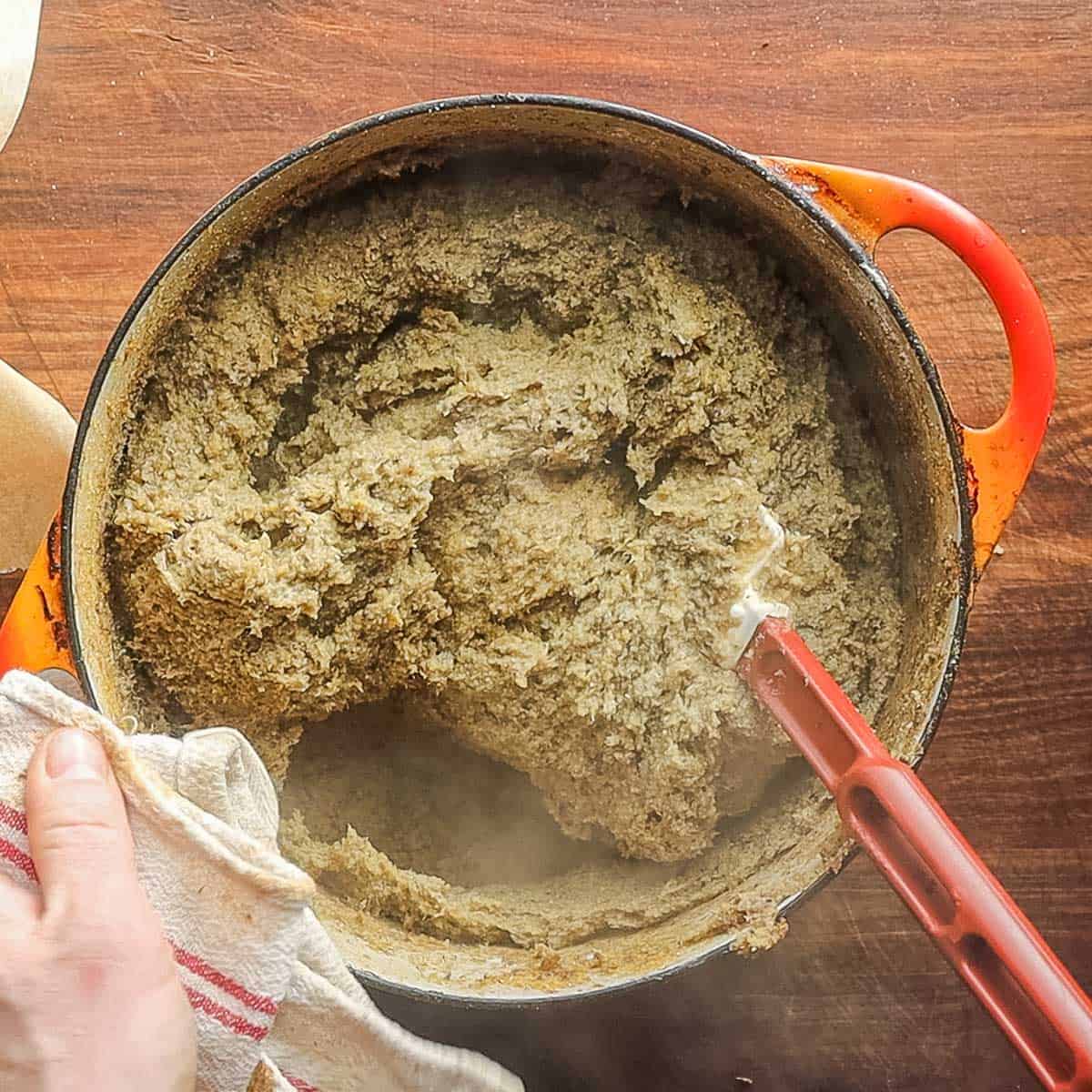
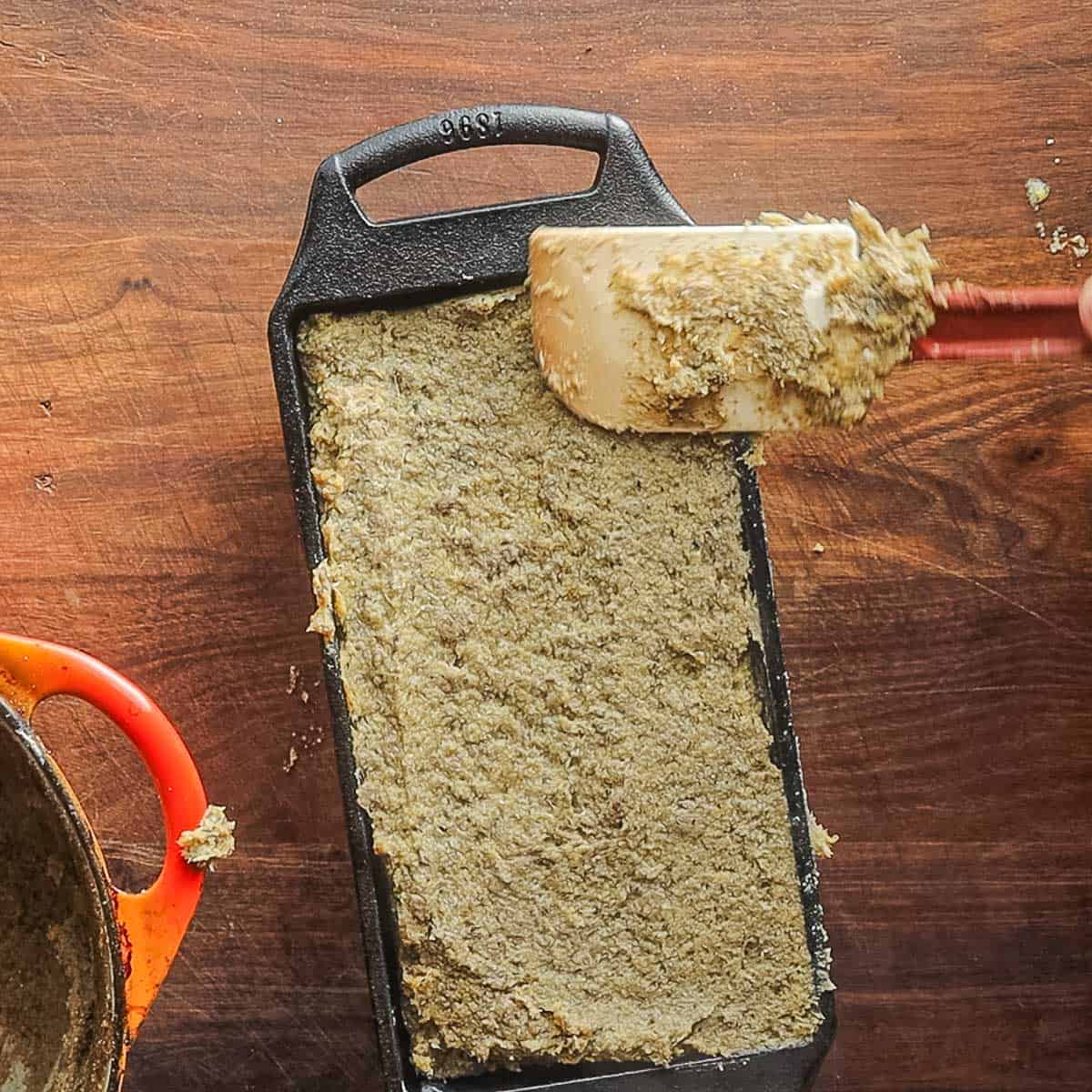
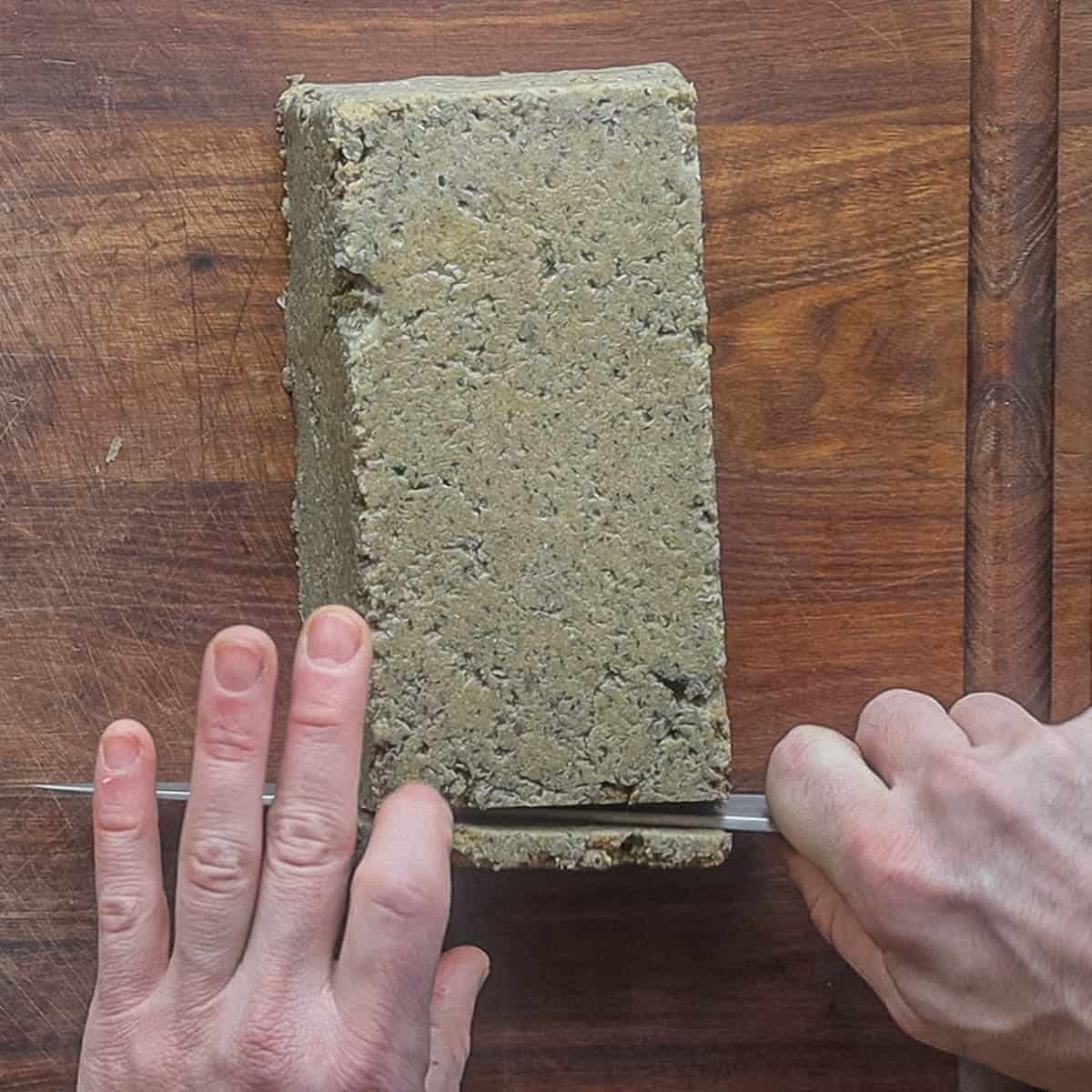
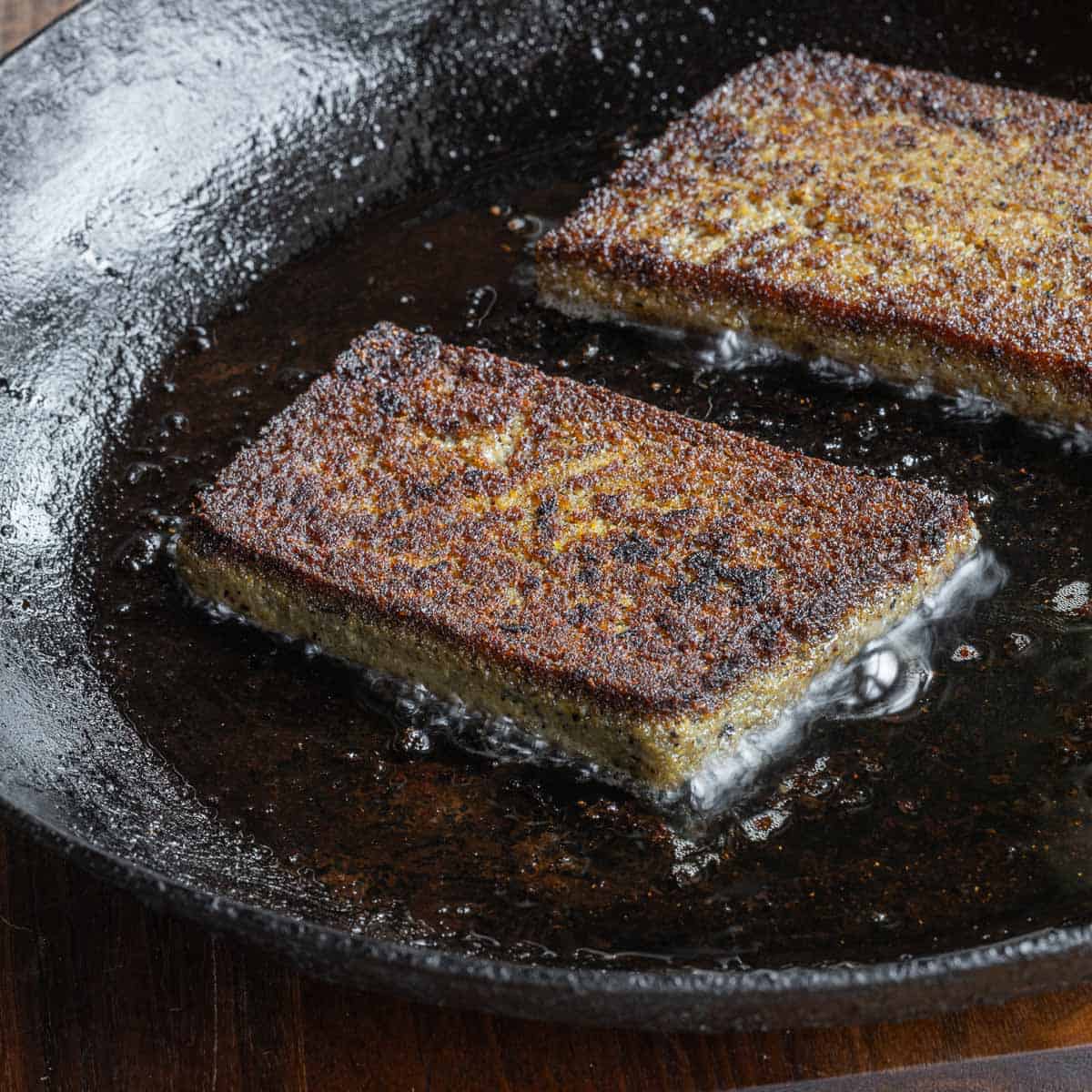
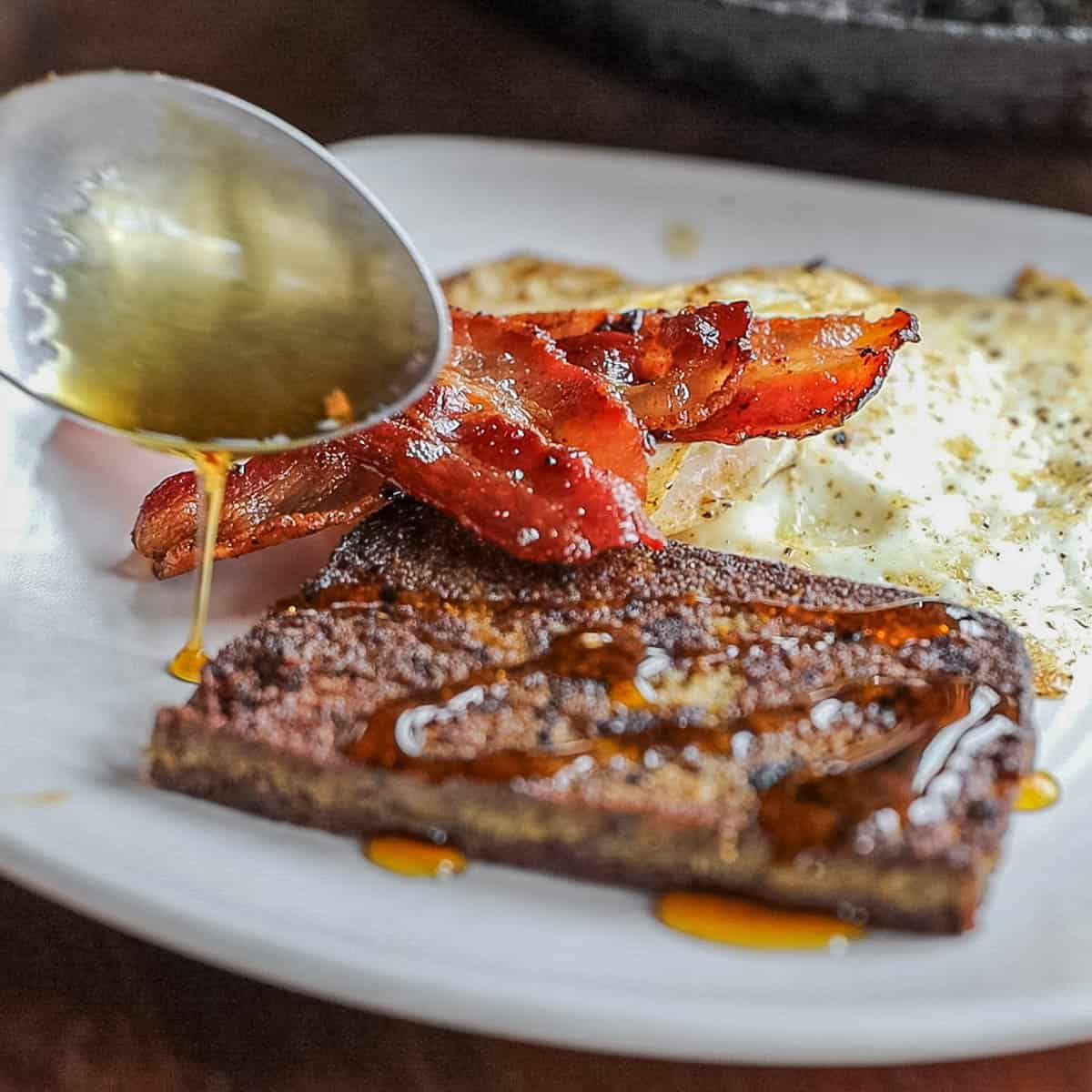
Traditional Pennsylvania Dutch Scrapple Recipe
Equipment
- Loaf pan
- 1 Dutch oven
Ingredients
- 14 oz liver or a blend of organs like liver, kidney, and heart cut into medium-sized chunks
- 1 10 oz chunk of bone with meat attached, preferably a shank such as a lamb or deer shank, or soup bones. Or substitute 4 ounces of cooked meat.
- 2 cups fine cornmeal
- ¼ cup buckwheat flour
- ½ cup yellow onion diced small
- 18 grams (1 level tablespoon) kosher salt This may seem like a lot of salt, but remember this is a breakfast "meat" like bacon or sausage. If you're sensitive to salt, use 2.5 teaspoons.
- 6 cups water
- Maple syrup small amounts for serving (optional)
- 2 dried bay leaves
- 1.5 teaspoons spice mix follows
Spice Mix
- ¾ teaspoon fresh ground black pepper
- ¼ teaspoon fresh ground nutmeg
- ¼ teaspoon fresh ground cinnamon
- ¼ teaspoon fresh ground allspice
Instructions
- Cover soup bones or shank and onion with the 6 cups of water, add the bay leaves, cover with a lid, then simmer on medium heat or bake at 300 for 2 hours or until very tender.
- Chill the shank until cool enough to handle. Remove the meat with a slotted spoon and set aside. Strain the broth and reserve. There should be exactly 4 cups of liquid, if there isn’t add enough water or stock to make up the difference.
- Cut the liver, heart or other organs into roughly 1 oz pieces.
- Remove the meat from the shank bone, then put the shank meat, cooked onion and organs in a meat grinder, or process n a food processor until fine. Sweat the meat mixture to evaporate the water in a saute pan for 2-3 minutes, then reserve, and allow to cool, covered.
- Meanwhile, Whisk the cornmeal and buckwheat flour with the salt and spices, and combine with the 4 cups of cooking liquid in a saucepot big enough to hold it. Heat the mixture, whisking constantly until it thickens, then turn the heat down to low and cook for 15 minutes.
- Add the cooked meat to the cornmeal mixture, and continue cooking, stirring occasionally to prevent sticking on the bottom for another 30 minutes. You can also bake the mixture at 300 for 30 minutes, or until very thick, as long as it’s covered.
- When the mixture is very solid and the cornmeal is well cooked, pour the mixture into a greased loaf pan, there may be a small amount of excess. Chill the scrapple, uncovered on a counter until room temperature, then refrigerate, covered with plastic wrap until completely set before slicing.
- To serve the scrapple, cut ½ inch slices and fry until crisp on medium-high heat on both sides. Serve for breakfast or lunch, with maple syrup on the side, if you like.
Video
Notes
Related Posts
- Offal and Organ Meat Recipes
- Veal Liver with Bacon, Onions and Mushrooms
- Smoked Venison Kidneys
- Rocky Mountain Oysters

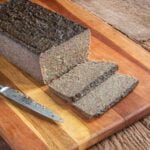
JJ
I've been eating scrapple since I was a kid but had never made it all by myself. This recipe is different than my Grandma's in some ways, but it took a lot less time to cook than I remember hers did and everyone loved it. If you make it you have to try it for breakfast with a little maple syrup!!
Kittie
I got my recipe from my mother in law. Her is made pretty much like this recipe using the liver from hog and using pork head or pork butt mixing in oat meal ,some corn meal and spices. Looks just like this recipe. We love to have it with our breakfast. This is the best recipe with a few different ingredients.
Alan Bergo
Thanks Kittie.
Puff Momma Supreme Kathy Wagner
We make ours from leftover Turkey
Adding onion and celery. Slightly flour to fry. Putting overly easy eggs on top! Yummy
Tm
Do you think the Habbersett brand uses pastured pork raised by regenerative standards?
Alan Bergo
Hey TM. Here's the thing with high quality meat is that it costs more, so, if brands are using it, they're likely going to be shouting from the top of the hill about it. Given the price point and lack of any advertising like that, I'd doubt it. That said, it's better to eat meat of lower quality than to not eat meat at all. Just food for thought there. One of the reasons it's good to make your own scrapple is you can control the quality of the meat.
Nancy
Please try RAPA SCRAPPLE...FLAVOR IS GREAT!!!
Not as bland as other brands!!
Cut slightly thicker than 1/4 inch...put in cold on...low. till releases from pan and turn over!!
Syrup..yes! Ketchup! Yes!!! Both at same time!! Yes!!! Deelish! Don't forget the 🥚!!! Over easy😉
Russell K Hackman
Where can I buy the six lb Amount ?
Alan Bergo
I make my own, sorry I can't help you there.
v
https://www.walmart.com/ip/RAPA-Scrapple-16-Oz-4-Pack/5177701076?from=/search
Amazon
etc..
Russell K Hackman
Where can I Buy ???
bob
Publix
Kristen
This is amazing! I used beef liver and a mix of chicken and beef bone broth for the stock. Scrapple was one of my childhood favorites, but it is impossible to find a version at the store where I live that meets my dietary preferences of being organic. Plus I don’t eat pork. I didn’t realize I could make it with liver. I have many times made a vegan version with walnuts, which is also very good, but it’s nice to have another option. Thank you!
Alan Bergo
I'm so glad it worked for you. Thank you.
R
Kristen, if you don't use the same actual meats it will NEVER be like your childhood memory. It's just not a vegan food.